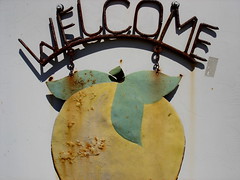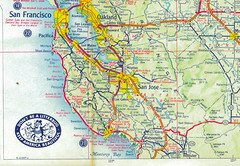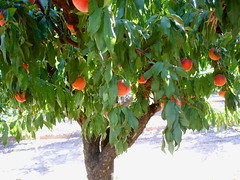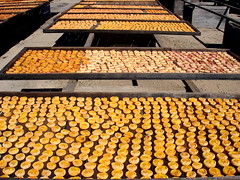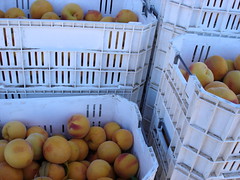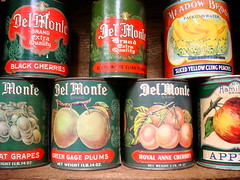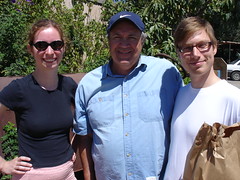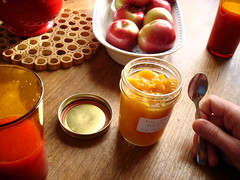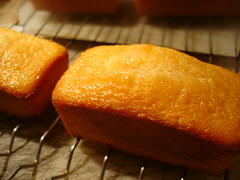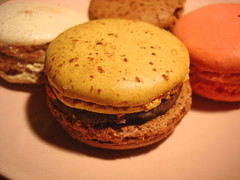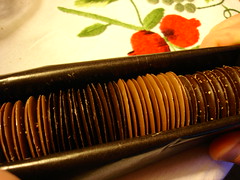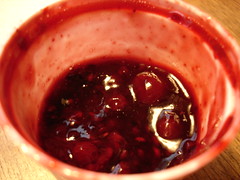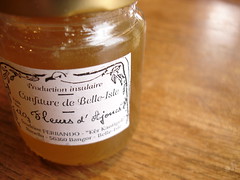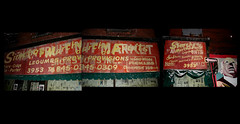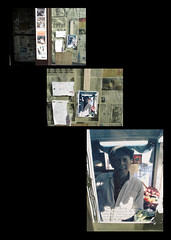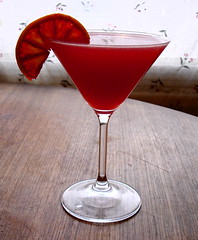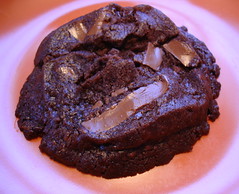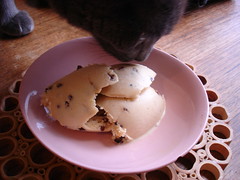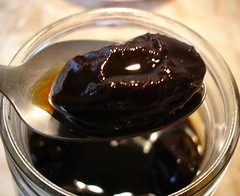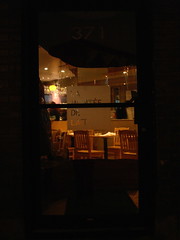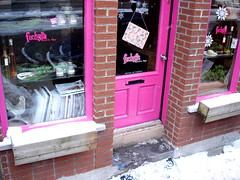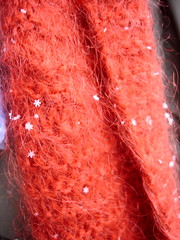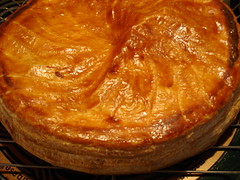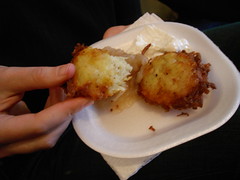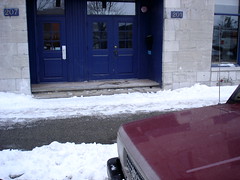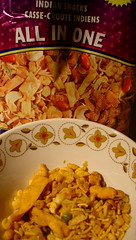Phew! We’ve got so much catching up to do. Where to begin?
For a variety of reasons, this year Christmas came a little later than usual. Both my family and Michelle’s like to celebrate Christmas on Christmas Eve, but this year things got pushed back to Christmas Day and even Boxing Day. We’re not quite in the realm of those people who celebrate Christmas in January so that they can avoid the holiday madness and take advantage of those MASSIVE BOXING DAY SALEs, but we’re edging in that direction.
The best meal we made was our Boxing Day feast. We were thinking Central European the whole way, and what we had our hearts set on was the kind of Christmas goose extravaganza that we had at Päffgen in Cologne two years ago. Päffgen was already my favorite brauerei at the time that I took Michelle there that December—not only did they have the best Kölsch in town, as far as I was concerned, but I loved the 19th-century, wood-paneled charm of the place—and I’d already had some good food there on one occasion, but that goose special they had that day was easily one of the best meals I had the entire time I was in Germany. Roast goose, stewed red cabbage, potato dumplings, marzipan-stuffed baked apples, and glazed chestnuts—what’s not to like? A couple of days later, when I told some of my colleagues about the meal Michelle and I had had at Päffgen, they thought I was kidding. Within a certain set over there in Germany it was fashionable to express embarrassment over “traditional German cuisine” and to try and display one’s sophistication by taking visitors (such as myself) to, say, an ersatz Cuban restaurant instead. These people didn’t understand just how exotic Central European cuisine can be to someone from North America (quality Central European cuisine, that is). Anyway, fast-forward 2 years and Michelle and I were dead-set on trying to duplicate that roast goose meal at Päffgen to the best of our abilities.
Then we learned just how expensive a Christmas goose could be. When we started to price a nice Christmas goose, we found that the 10-12 lb bird our recipe was calling for would probably set us back anywhere from $100-$150. We’re all for splurging, especially when it comes to holiday meals, but we didn’t want to deal with the pressure of having to savor every $4 bite of Christmas goose. We definitely didn’t want to ditch the rest of the menu, so we gave the matter of a substitution some thought, taking into account a number of factors, and we finally settled on a pork roast. After all, we’d been reading Anthony Bourdain’s Les Halles Cookbook, and his introductory remarks on the subject of “pig” had stuck with us: “Is there any better, more noble, more magical animal than the pig? Not from a cook’s perspective there isn’t. Virtually every single part of a pig can be made into something delicious. Pork makes just about everything taste better, and no beast offers more variety, more possibilities, more traditional, time-tested recipes per ounce than the humble piggy.” Trading in that ostentatious goose for a humble pig certainly was going to make the meal cheaper (about $80-$130 cheaper), but we were pretty sure the right recipe would be just as festive, just as delicious, in its own way. We settled on a recipe from The Gourmet Cookbook--it, too, was served with red cabbage, but we were especially attracted to it because of the fact that it involved brining, and, having never tried to that method, we were dying to brine something.
The recipe called for a very specific cut of pork—“1 (6-rib) center-cut pork loin roast (3 1/2 pounds), chine removed and bottom of ribs cracked”—so we turned to the professionals and took our order to La Maison du Roti. Not only were they able to fill our order properly, but the head butcher was impressed by our choice of meat and cut, and he pressed me for details on the recipe we were using. We made our brine as soon as we got home and its fragrance soon filled the kitchen; a few hours later, after the brine had gotten a chance to cool, our roast was soaking in it and taking on its flavors. Two days later when we finally got around to roasting the pork, the recipe worked like a charm. This was hands-down the tastiest pork dish I’ve ever made, I think, and it was a hit with our red cabbage/stuffed, baked apples/glazed chestnuts combo.
Roast Loin of Pork
4 allspice berries
2 tbsp plus 1 tsp black peppercorns
8 cups water
1/3 cup kosher salt
3 tbsp sugar
1 tbsp dried thyme, crumbled
4 whole cloves
1 Turkish bay leaf or 1/2 California bay leaf
1 (6-rib) center-cut pork loin roast (3 1/2 pounds), chine removed and bottom of ribs cracked (have your butcher do this)
1 large onion
2 tbsp vegetable oil
Crack allspice and 2 tbsp of the peppercorns in a mortar with a pestle. Combine the water, the allspice and peppercorns, salt, sugar, thyme, cloves, and bay leaf in a 4-quart saucepan and bring to a boil, then reduce heat and simmer, uncovered, for 15 minutes. Pour brine into a deep 5-quart bowl or pot and cool, then refrigerate, covered, until cold, about 2 hours. Add pork to brine, making sure it is completely covered. Marinate, covered and refrigerated, for at least 2 days.
When the pork has been properly brined, put a rack in the middle of the oven and preheat the oven to 400 degrees F. Cut the onion crosswise into 1/2-inch thick rounds (do not separate into rings). Crack remaining teaspoon of peppercorns.
Drain pork, discarding brine, and pat dry. Do not remove any spices adhering to it. Sprinkle pork with freshly cracked peppercorns. Heat oil in a 10- to 12-inch heavy ovenproof skillet, preferably cast-iron, over moderately high heat until hot but not smoking. Brown the pork on all sides, 10-15 minutes total. Transfer to a plate.
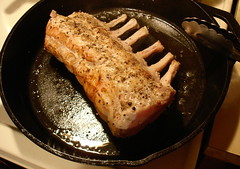
Arrange the onion rounds in the skillet and place the pork with the fat side facing up. Transfer to the oven and roast until thermometer inserted 2 inches into the center of the roast (without touching any bone) registers 140 degrees F, 45 minutes to 1 hour. Transer the pork to a cutting board and let it stand, loosely covered with foil, for 20 minutes. (Its internal temperature will rise 10-15 degrees as it stands.)
Gourmet’s recipe then followed with a red cabbage recipe and a port wine sauce recipe, but we served our roast with our Central European red cabbage and used its red wine-based sauce in place of the port wine sauce. The roast turned out so juicy and tender than an additional sauce was completely unnecessary. This is what one of our plates looked like after we’d loaded it up:
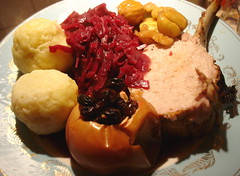
Our Central European spread made for a great holiday meal, but it's inexpensive and straightforward enough that it would be ideal for a fall/winter dinner party.
When in Cologne: Brauerei Päffgen, Friesenstrasse 64-66, (0221) 135461
For details on La Maison du Roti check out our Montreal Food Guide.
aj

